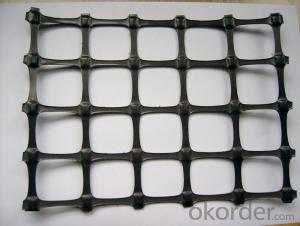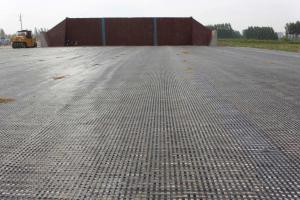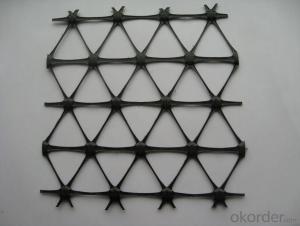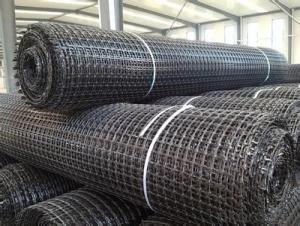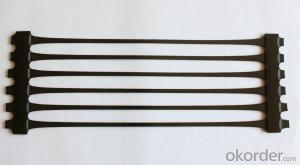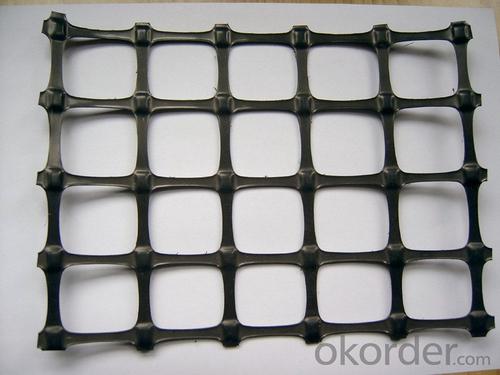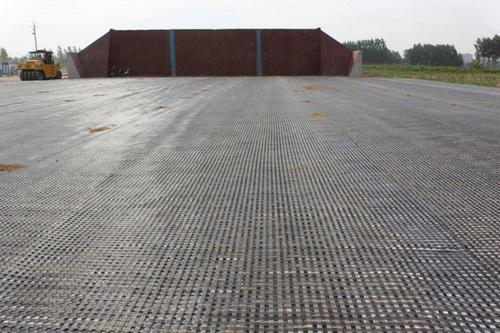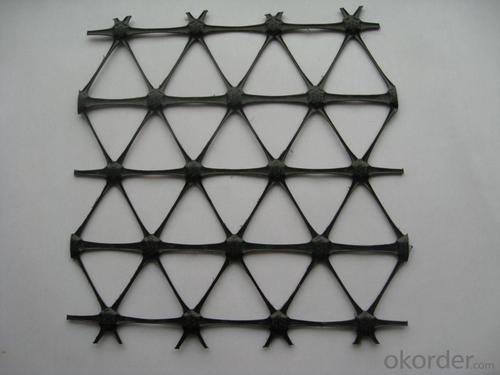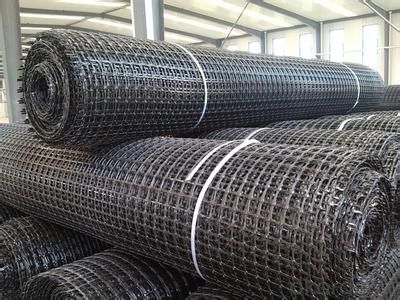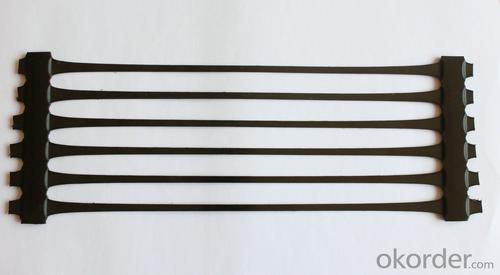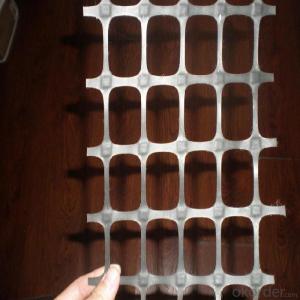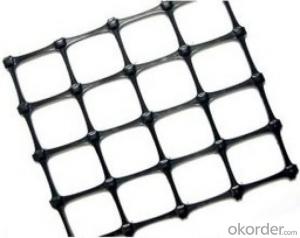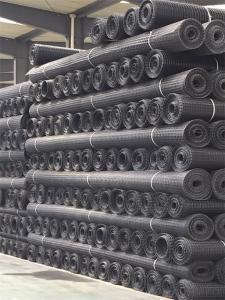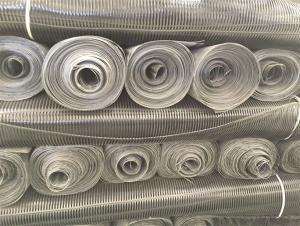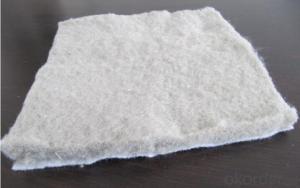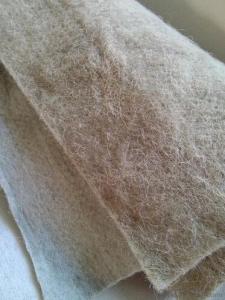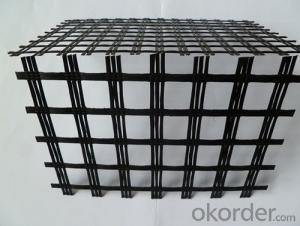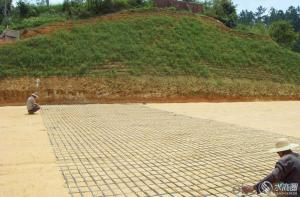Reinforcement Geogrids for Fiberglass Road Pavement
- Loading Port:
- Shanghai
- Payment Terms:
- TT or LC
- Min Order Qty:
- 50000 m²
- Supply Capability:
- 2000000 m²/month
OKorder Service Pledge
OKorder Financial Service
You Might Also Like
Fiberglass Geogrid for Road Pavement Reinforcement
Description Of Fiberglass Geogrid for Road Pavement Reinforcement:
Fiberglass geogrid is based on fiberglass woven cloth coated with modified bitumen or PVC, it was developed to address the problem of pavement cracking on highways, roads and runways, driven by a need to reduce cost for infrastructure maintenance and repair.
It is characterized by high tensile strength in axial and lateral directions, low stretch rate, alkali-resistance, low temperature- resistance, as well as convenience in construction and low price. It can be used on pitch pavement to prevent cracks and prolong pavement service life. It also can be used as a basal reinforcement material for hillsides, reservoirs, harbors, ports, water channels, seawalls, etc.
Main Features of Fiberglass Geogrid for Road Pavement Reinforcement:
1.High tensile strength, low elongation.
2.No long-term creep: the product can keep for a long time performance.
3.Thermal stability: fiber glass melting temperature above 1000 ℃.
4.The compatibility with asphalt.
5.Physical and chemical stability.
Specifications of Fiberglass Geogrid for Road Pavement Reinforcement:
Tensile Strength (KN) | Warp | >30 | >50 | >60 | >80 | >100 | >120 | >150 | >200 |
Weft | >30 | >50 | >60 | >80 | >100 | >120 | >150 | >120 | |
Elongation(%) | <4 | <4 | <4 | <4 | <4 | <4 | <4 | <4 | |
Mesh Size(mm) | 25.4*25.4 | 25.4*25.4 | 25.4*25.4 | 25.4*25.4 | 25.4*25.4 | 25.4*25.4 | 25.4*25.4 | 25.4*25.4 | |
Elastic Modulus | 76 | 76 | 76 | 76 | 76 | 76 | 76 | 76 | |
Width(m) | 1~6 | 1~6 | 1~6 | 1~6 | 1~6 | 1~6 | 1~6 | 1~6 | |
Length(m) | 50~300 | 50~300 | 50~300 | 50~300 | 50~300 | 50~300 | 50~300 | 50~300 | |
Temperature Resistant(℃) | -100~280 | -100~280 | -100~280 | -100~280 | -100~280 | -100~280 | -100~280 | -100~280 | |
Resin Content (%) | 18~20 | 18~20 | 18~20 | 18~20 | 18~20 | 18~20 | 18~20 | 18~20 | |
Glue Type | Bitumen PVC SBR soakage | Bitumen PVC SBR soakage | Bitumen PVC SBR soakage | Bitumen PVC SBR soakage | Bitumen PVC SBR soakage | Bitumen PVC SBR soakage | Bitumen PVC SBR soakage | Bitumen PVC SBR soakage | |
Applications of Fiberglass Geogrid for Road Pavement Reinforcement:
Strengthen bitumen concrete roadway and reduce and prevent various kinds of reflection gaps on roadway.
1.Suitable for highway, railway, airport road of subgrade enhancement.
2.Suitable for the large parking lot and port freight yard that the foundations of the permanent load increased.
3.Suitable for railway, highway slope protection.
4.Suitable for culverts.
5.Suitable for the uniaxial tensile geogrid reinforced soil secondary enhancement, after further enhance soil, prevent soil erosion.
6.Mining, tunnel reinforcement.
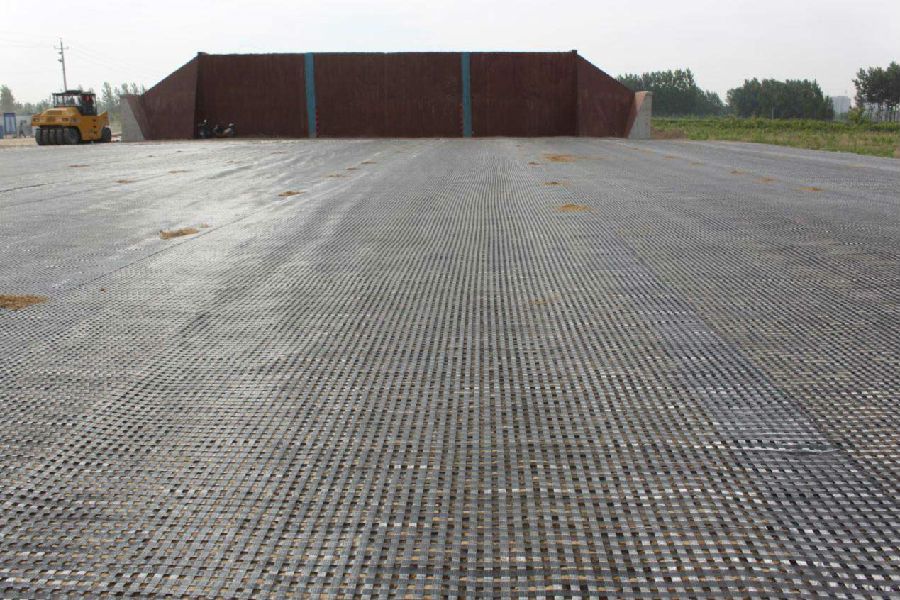
IMages of Fiberglass Geogrid for Road Pavement Reinforcement:
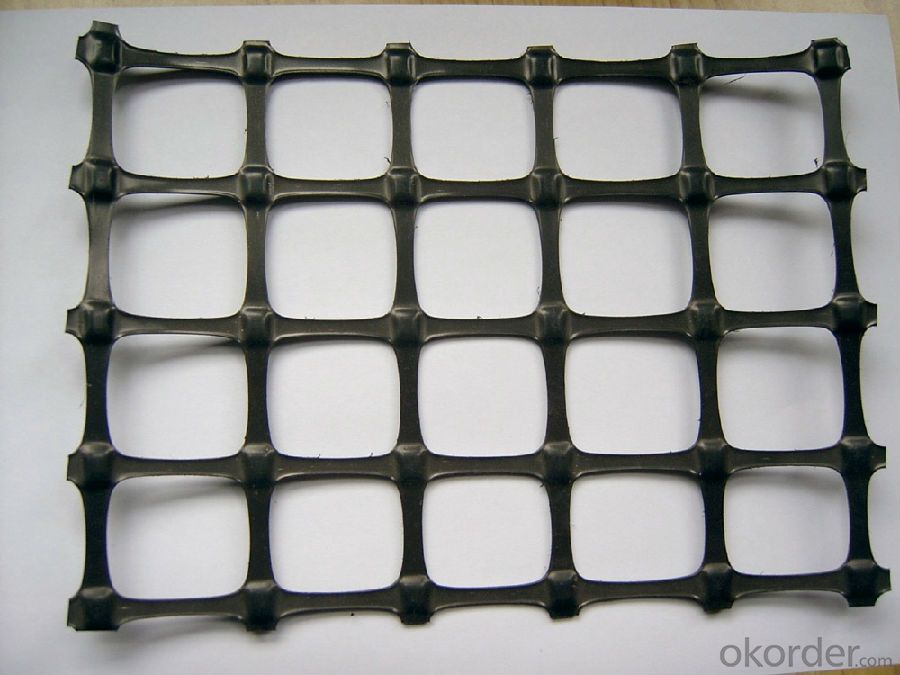
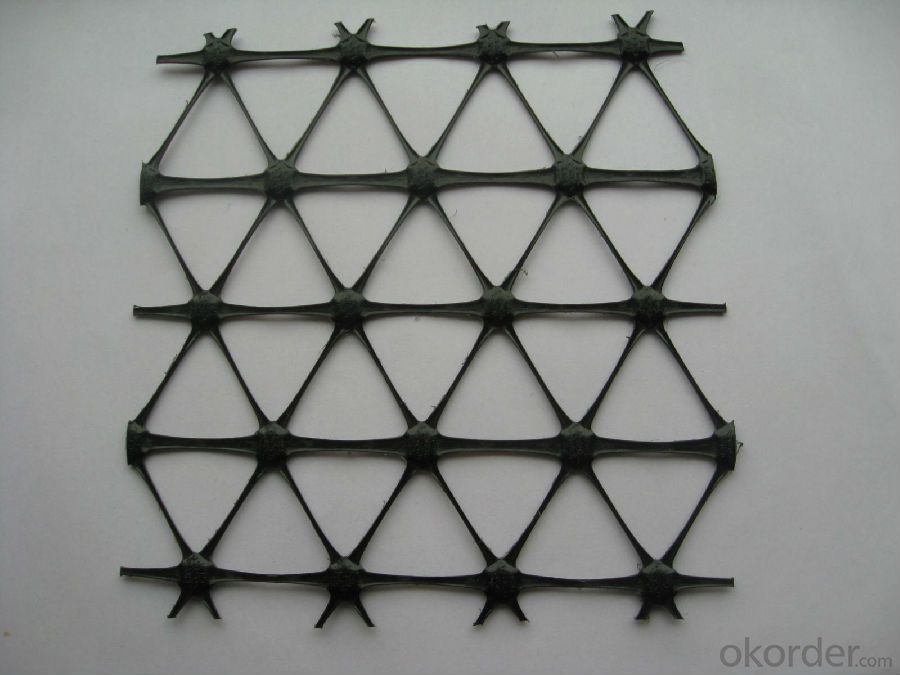

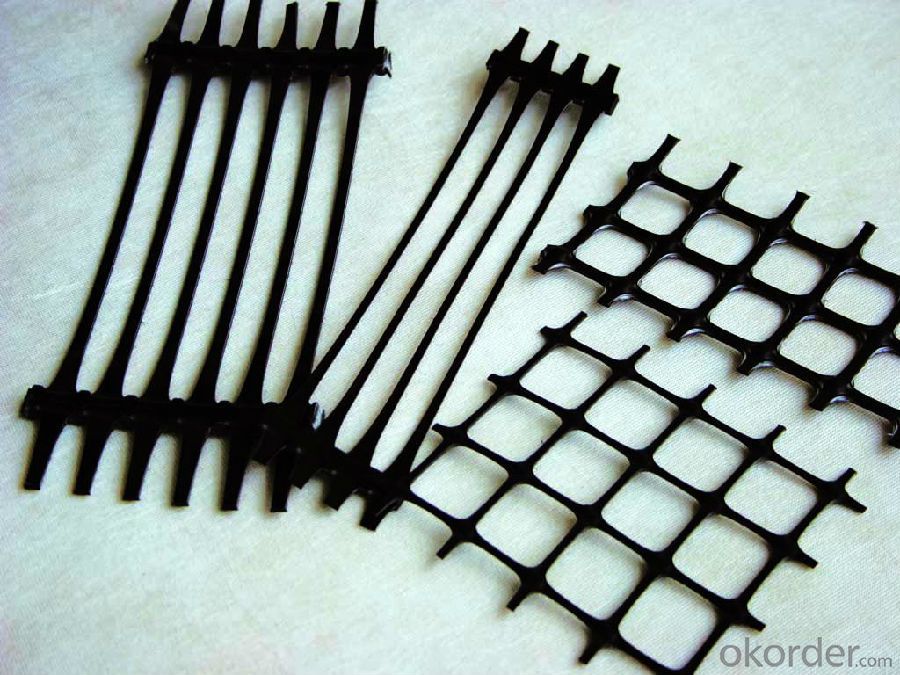
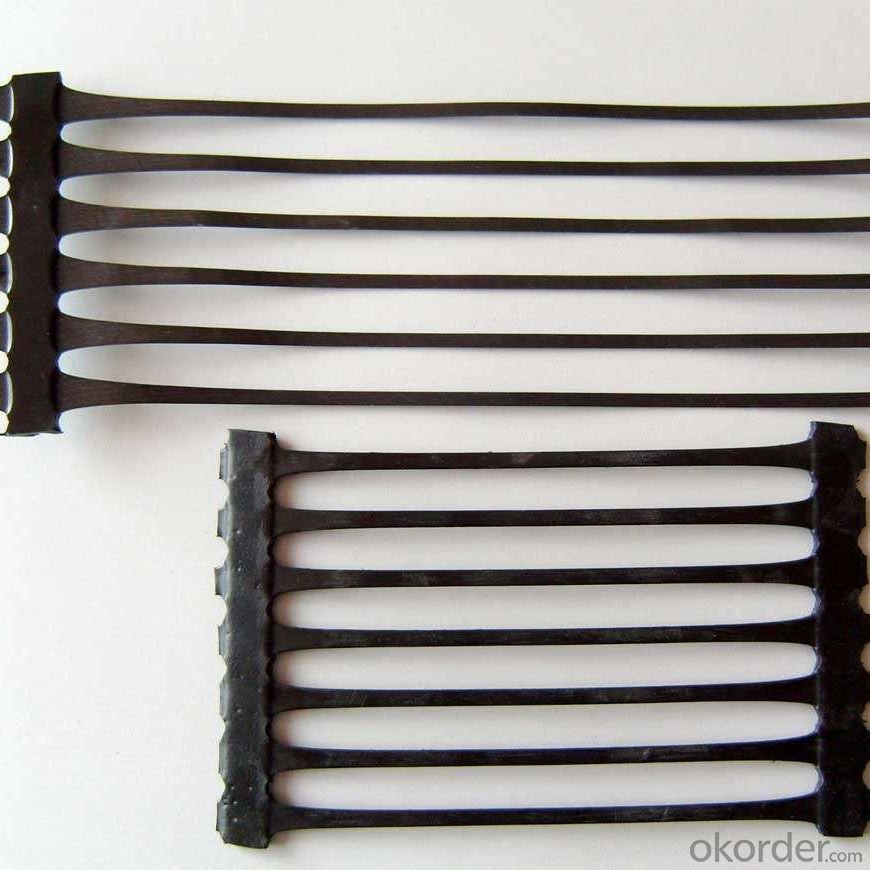
FAQ of Fiberglass Geogrid for Road Pavement Reinforcement:
1. What are we supplying?
We are specialized in producing Geosynthetic materials, like Geogrid Series, HDPE Geocell, Geonet, Geotextile, Geomat, Tri Denmensional Composite Grainage Geonet, and Geomembrane Series.
.
2. How Many years experience do we have?
We have been exported to more than 20 countries in the past 15 years.
3. How long do we usually reply your request?
We always reply our customer within 24 hours.
- Q: What are the advantages of using geogrids in mechanically stabilized aggregate bases?
- There are several advantages of using geogrids in mechanically stabilized aggregate bases. Firstly, they improve the overall stability and strength of the base by distributing and transferring loads more efficiently. This helps to prevent deformations and rutting, leading to a longer-lasting and more durable pavement structure. Secondly, geogrids can reduce the thickness of the aggregate base required, resulting in cost savings and a more sustainable construction approach. Additionally, they enhance the performance of the base by minimizing the potential for differential settlement and improving overall load-bearing capacity. Finally, geogrids offer better long-term performance by resisting the effects of aging, such as cracking and degradation, which can significantly extend the lifespan of the pavement system.
- Q: How do geogrids improve the performance of asphalt pavements?
- Geogrids improve the performance of asphalt pavements by providing reinforcement and stability. They act as a structural support by distributing load and reducing stress on the pavement, which helps prevent cracking and rutting. Geogrids also enhance the pavement's strength and durability by increasing its resistance to deformation and improving overall structural integrity.
- Q: The ground treatment is full of geogrid is not along the line direction
- Therefore, the purchase of the appropriate width of the geogrid, laying along the line direction can be, hope to adopt, there is a need for private chat, thank you
- Q: What are the advantages of using geogrids in ground improvement for seismic stability?
- Using geogrids in ground improvement for seismic stability offers several advantages. Firstly, geogrids enhance the strength and stability of the soil by providing reinforcement. They distribute the applied loads more evenly, reducing the potential for soil settlement and minimizing the risk of ground failure during seismic events. Secondly, geogrids improve the overall bearing capacity of the soil. By confining and interlocking with the soil particles, they increase the shear resistance and prevent excessive lateral movement of the soil, thus enhancing the stability of the ground. Furthermore, geogrids act as a barrier against soil erosion and prevent the loss of soil particles during earthquakes. They help maintain the integrity of the soil structure, reducing the potential for landslides and slope failures. Moreover, geogrids are flexible and adaptable, making them suitable for a variety of ground conditions. They can be easily installed and customized to fit the specific project requirements, allowing for efficient and cost-effective ground improvement solutions. Overall, the use of geogrids in ground improvement for seismic stability offers significant advantages, including enhanced soil strength, improved bearing capacity, erosion control, and adaptability, ultimately resulting in a safer and more stable foundation for structures in earthquake-prone areas.
- Q: How do geogrids prevent lateral spreading of soil?
- Geogrids prevent lateral spreading of soil by providing reinforcement and stabilization to the soil layers. They are made of high-strength materials and are placed within the soil, creating a network of interconnected elements. This network enhances the soil's shear strength and restricts its movement, preventing lateral spreading. Additionally, geogrids distribute the applied loads more evenly, reducing the stress on the soil and minimizing the potential for soil movement.
- Q: Are geogrids suitable for use in soft soil conditions?
- Yes, geogrids are suitable for use in soft soil conditions. Geogrids provide reinforcement and stabilization to the soil, improving its strength and preventing soil displacement. They help distribute the load more evenly, reducing the risk of settlement and potential failure in soft soil conditions.
- Q: Geogrid nailed pictures and size
- U studs for the geogrid? You are ready to do the sale of finished products, or on the site directly on the grid?
- Q: What are some common standards and specifications for geogrids?
- Some common standards and specifications for geogrids include ASTM D6637, which provides testing methods for determining the tensile properties of geogrids, and ASTM D5262, which specifies the requirements for geogrids used in soil stabilization applications. Additionally, ISO 10318 and EN 15381 are international standards that outline the design, testing, and performance characteristics of geogrids for various applications. These standards ensure that geogrids meet specific criteria for strength, durability, and performance, allowing engineers and designers to choose the appropriate geogrid for their specific project requirements.
- Q: Can geogrids be used for reinforcement in landfill liners?
- Yes, geogrids can be used for reinforcement in landfill liners. Geogrids are commonly used in landfill engineering to improve the stability and strength of liners by providing reinforcement and preventing soil erosion. They help to distribute loads evenly, enhance long-term performance, and increase the overall stability of landfill liners.
- Q: How to do this in the geogrid in the retaining wall? Is there any remedy?
- No long-term creep as reinforcing material, have in long-term load under the condition of deformation resistance that the creep resistance is extremely important, glass fiber does not creep, which ensure product can maintain long-term performance.
Send your message to us
Reinforcement Geogrids for Fiberglass Road Pavement
- Loading Port:
- Shanghai
- Payment Terms:
- TT or LC
- Min Order Qty:
- 50000 m²
- Supply Capability:
- 2000000 m²/month
OKorder Service Pledge
OKorder Financial Service
Similar products
Hot products
Hot Searches
Related keywords
